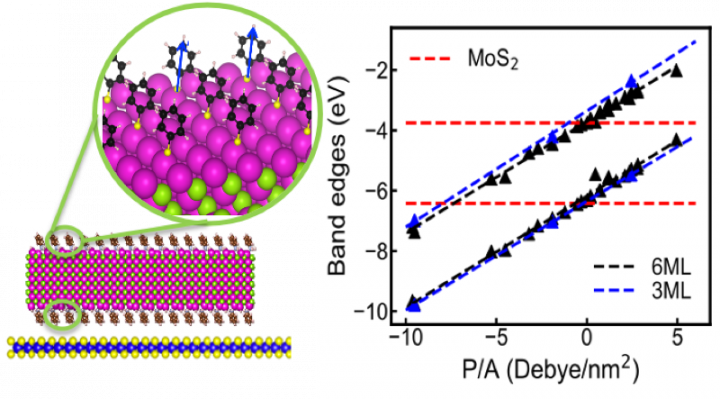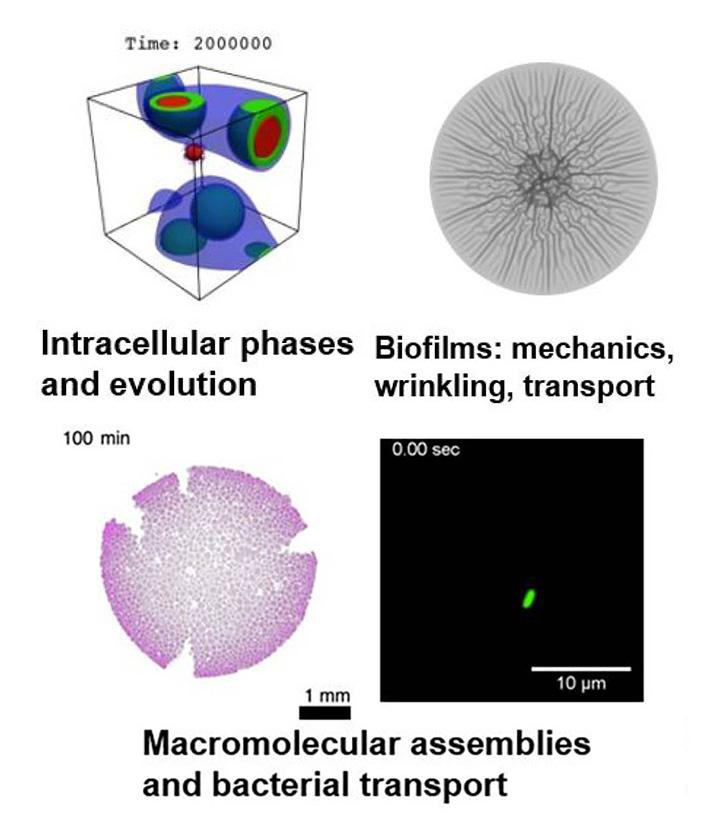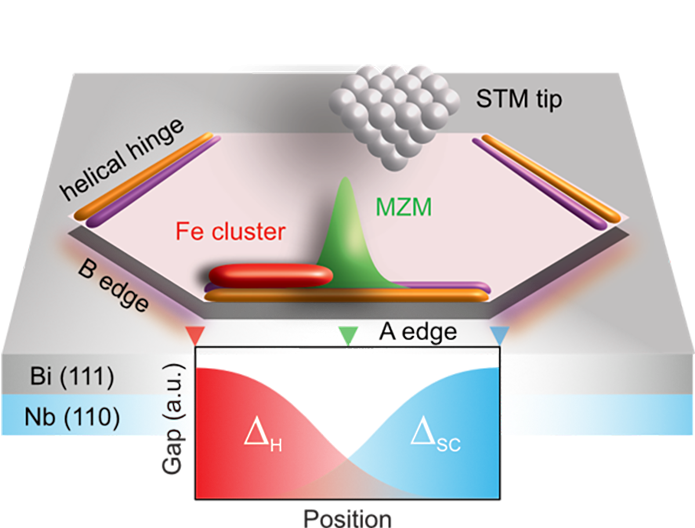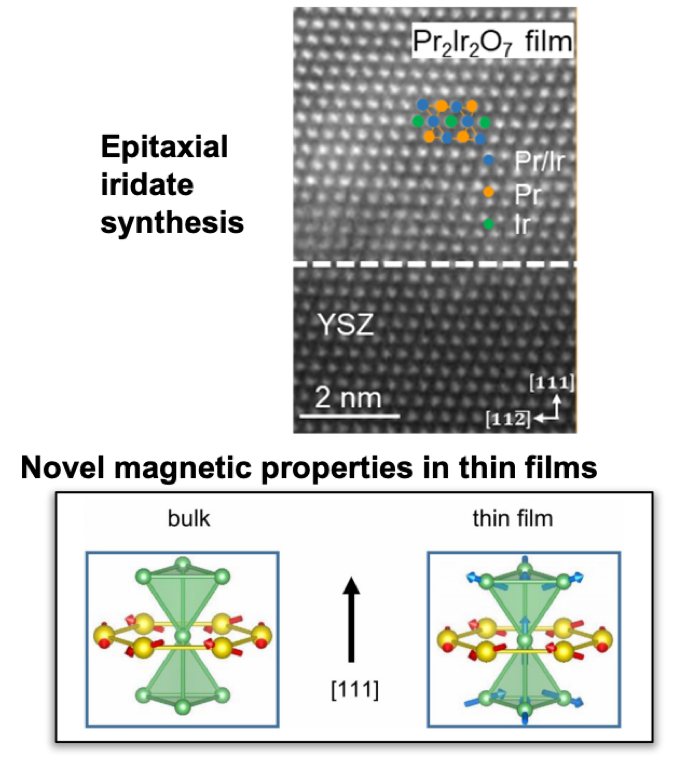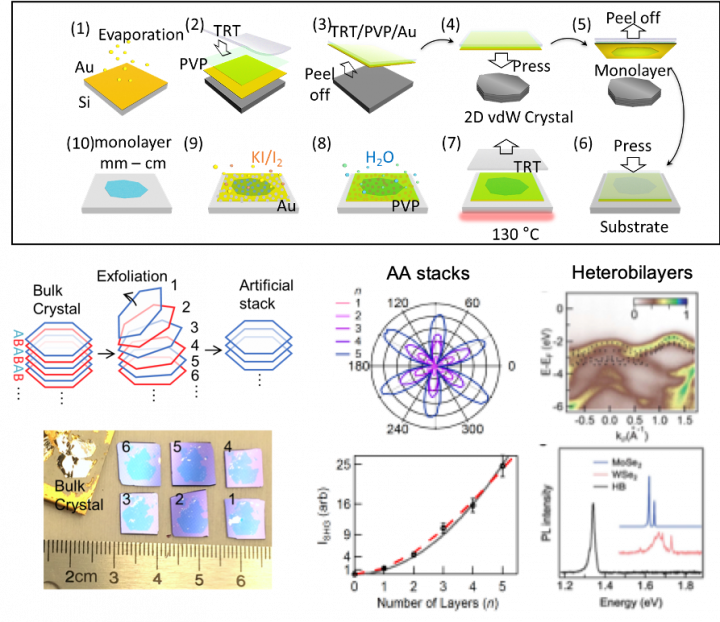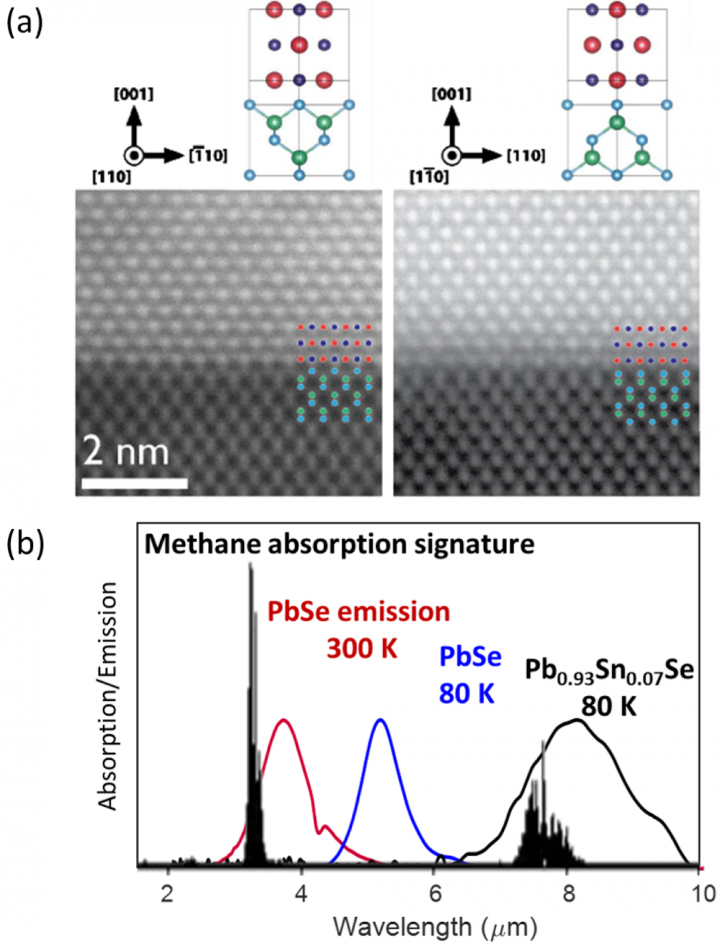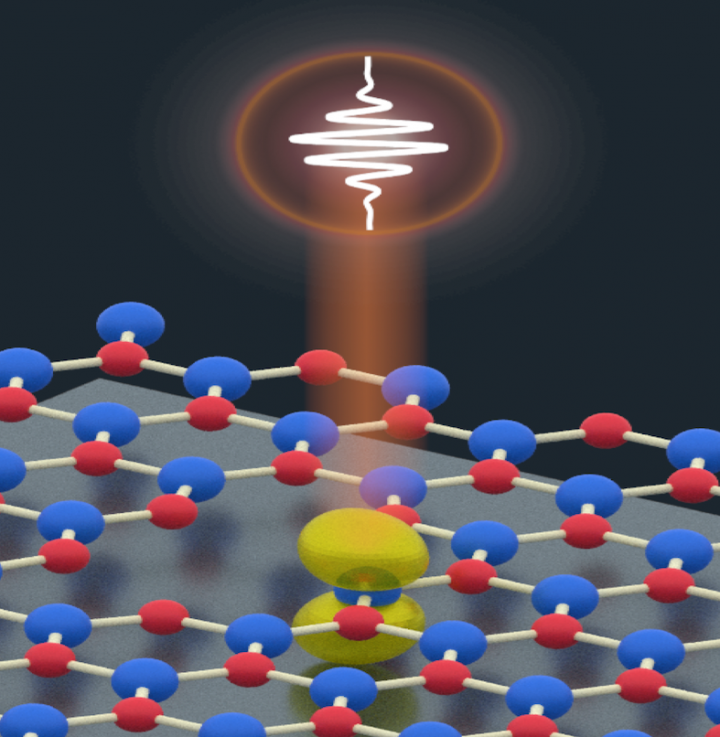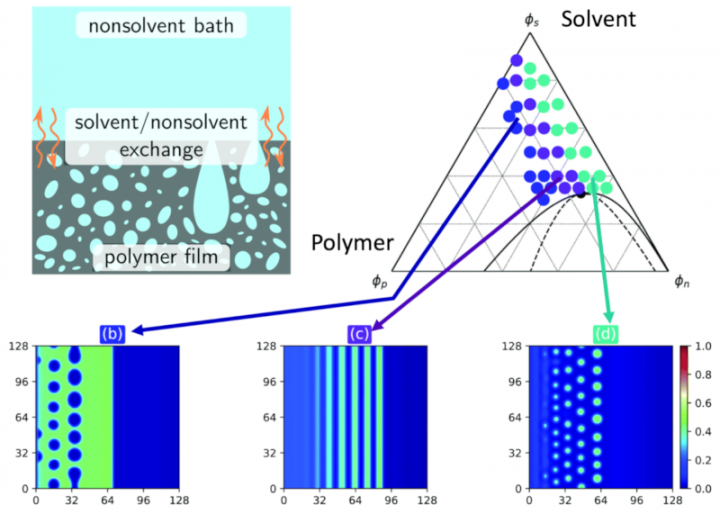Most inorganic quantum dots are obtained through organic synthesis using surface ligands. When deposited on two-dimensional materials such as MoS2, such ligands form an “interlayer” between the components of the resulting mixed-dimensional heterojunction. To understand the effects of this interlayer, a collaborative theory and experimental effort in NU-MRSEC IRG-1 effort has modeled and characterized the electronic structure of CdSe nanoplatelets with well-controlled ligand-dipole terminations.

